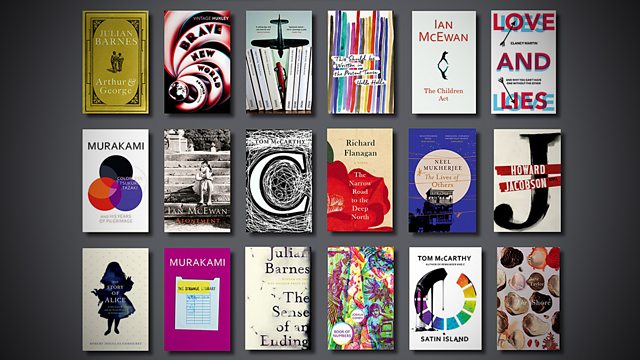The Art of Book Cover Design: What Makes a Cover Stand Out on the Shelf?
They say you shouldn't judge a book by its cover, but the truth is, we often do. A well-designed book cover is a powerful invitation, a glimpse into the world waiting within its pages. In this article, we'll delve into the art of book cover design, exploring the elements that make a cover stand out on the shelf and leave a lasting impression.
**1. The First Impression Matters
A book cover is the first thing a reader sees. It's a visual handshake, an introduction to the story within. A compelling cover grabs attention, piques curiosity, and entices the reader to pick up the book.
**2. Understanding the Genre
Different genres have distinct visual cues. A mystery novel will have a different design language than a romance or a science fiction book. Understanding the genre helps designers choose elements that resonate with the target audience.
**3. Balancing Simplicity and Complexity
A successful cover finds the delicate balance between simplicity and complexity. It should convey the essence of the book without overwhelming the viewer with too much information.
**4. Typography: Choosing the Right Font
Typography plays a crucial role in book cover design. The font, its style, and size should harmonize with the overall design and convey the book's tone. For instance, a thriller might use bold, sharp-edged fonts, while a romance novel might opt for elegant, flowing scripts.
**5. Color Palette and Mood
Colors evoke emotions and set the mood. Warm tones like reds and yellows may suggest excitement or passion, while cool blues and greens may evoke a sense of calm or mystery. The right color palette helps convey the book's atmosphere.
**6. Imagery and Artwork
The choice of imagery or artwork on a book cover is critical. It should be evocative, relevant to the content, and resonate with the reader. A well-chosen image can spark curiosity and create an emotional connection.
**7. Composition and Layout
The arrangement of elements on a cover—images, title, author name—should be carefully considered. A well-balanced composition guides the eye and ensures that no element overwhelms the others.
**8. Creating Brand Consistency
For authors with a series of books, maintaining consistency in cover design is essential. It helps establish brand recognition, making it easier for readers to identify and connect with the author's work.
**9. Testing and Gathering Feedback
Before finalizing a cover, it's beneficial to gather feedback from potential readers or peers. A fresh perspective can offer insights into what elements are most compelling and what might need adjustment.
**10. Adaptability for Different Formats
A good book cover design should be versatile, working well in various formats—print, e-book, audiobook, and even on small screens or in thumbnail form online.
**11. Staying Timeless Yet Relevant
While a book cover should feel current, it's also important for it to age gracefully. Designs that are too tied to current trends may quickly become outdated. Strive for a cover that remains relevant and appealing over time.
12. Incorporating Symbolism and Metaphor
A well-designed cover often incorporates elements of symbolism or metaphor that resonate with the story's themes or characters. These subtle cues can provide readers with hints about the deeper layers of the narrative.
13. Evoking Emotion and Atmosphere
A powerful book cover should evoke emotion and create an atmosphere that draws readers into the world of the story. Whether it's a sense of adventure, romance, mystery, or suspense, the cover should set the tone for the reading experience.
14. Cultural Sensitivity and Representation
In an increasingly diverse world, it's crucial for book covers to be culturally sensitive and representative. Thoughtful consideration of cultural elements, characters' appearances, and settings ensures that the cover respects and reflects the diversity of the story.
15. Collaborative Process with Authors and Designers
The collaboration between authors and designers is a vital part of the cover design process. Authors often bring unique insights into the heart of their story, which can inform the design choices. Open communication and a shared vision lead to covers that authentically represent the book.
16. Considering the Spine and Back Cover
A well-designed cover extends beyond the front. The spine and back cover also play a crucial role in the overall presentation. A cohesive design that flows from front to back creates a polished and professional look.
17. Iconic Covers That Become Cultural Symbols
Occasionally, a book cover becomes iconic and transcends the individual story. It becomes a cultural symbol, instantly recognizable to readers around the world. These covers often hold a special place in the hearts of readers and may even influence pop culture.
18. Reflecting Changing Trends and Tastes
Book cover design evolves along with trends in art, design, and culture. What resonates with readers today may differ from what was popular a decade ago. Staying attuned to these shifts ensures that covers remain relevant and engaging.
19. The Role of Cover Design in Marketing
A book cover is a powerful marketing tool. It's the face of the book, and it's what potential readers see first. A well-designed cover can pique interest, generate buzz, and entice readers to learn more about the book.
20. Pushing Creative Boundaries
Designers and authors alike have the opportunity to push creative boundaries with book cover design. Experimenting with unconventional styles, formats, and artistic techniques can lead to covers that stand out and captivate audiences.
21. Celebrating the Diversity of Cover Art
The world of book cover design is incredibly diverse. From minimalist, clean designs to elaborate, illustrative masterpieces, there's a wide range of styles to explore. This diversity ensures that there's a cover out there for every type of reader and every genre of book.
Conclusion: The Artistry that Beckons Readers
Book cover design is an intricate dance of art and strategy, an invitation to explore the worlds contained within the pages. It's a craft that requires an understanding of the book's essence, the tastes of its audience, and the power of visual storytelling. A well-designed cover can captivate, resonate, and leave a lasting imprint in the reader's mind. It's an artistry that beckons readers and invites them on a journey they'll never forget. So, whether you're a reader seeking your next adventure or an author ready to introduce your creation to the world, remember, a cover is not just a shield—it's a doorway. Step through, and let the adventure begin.






